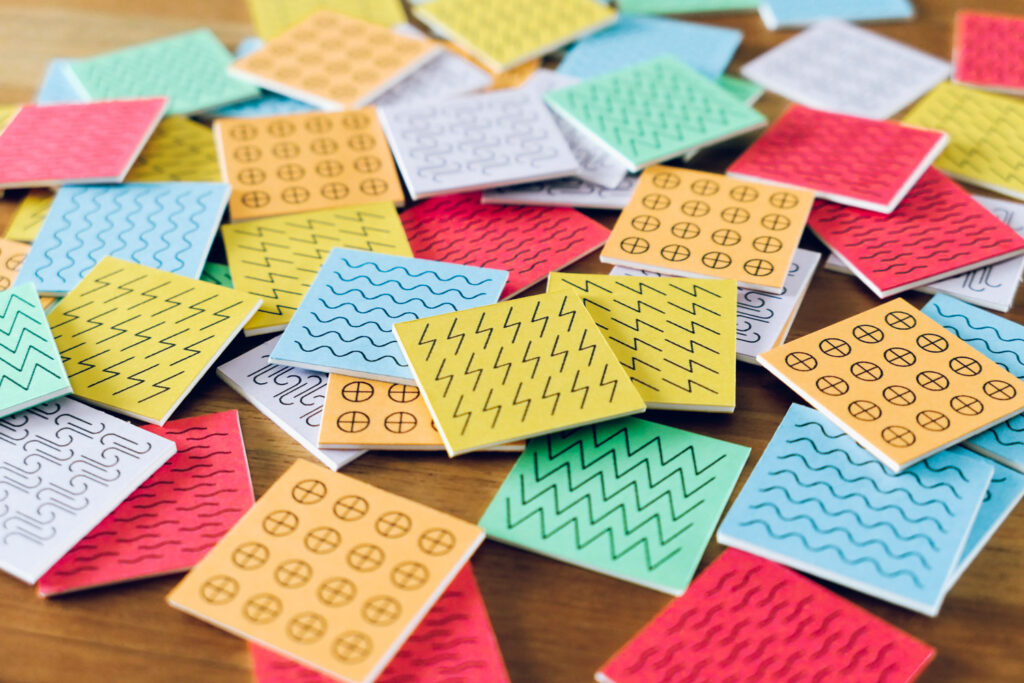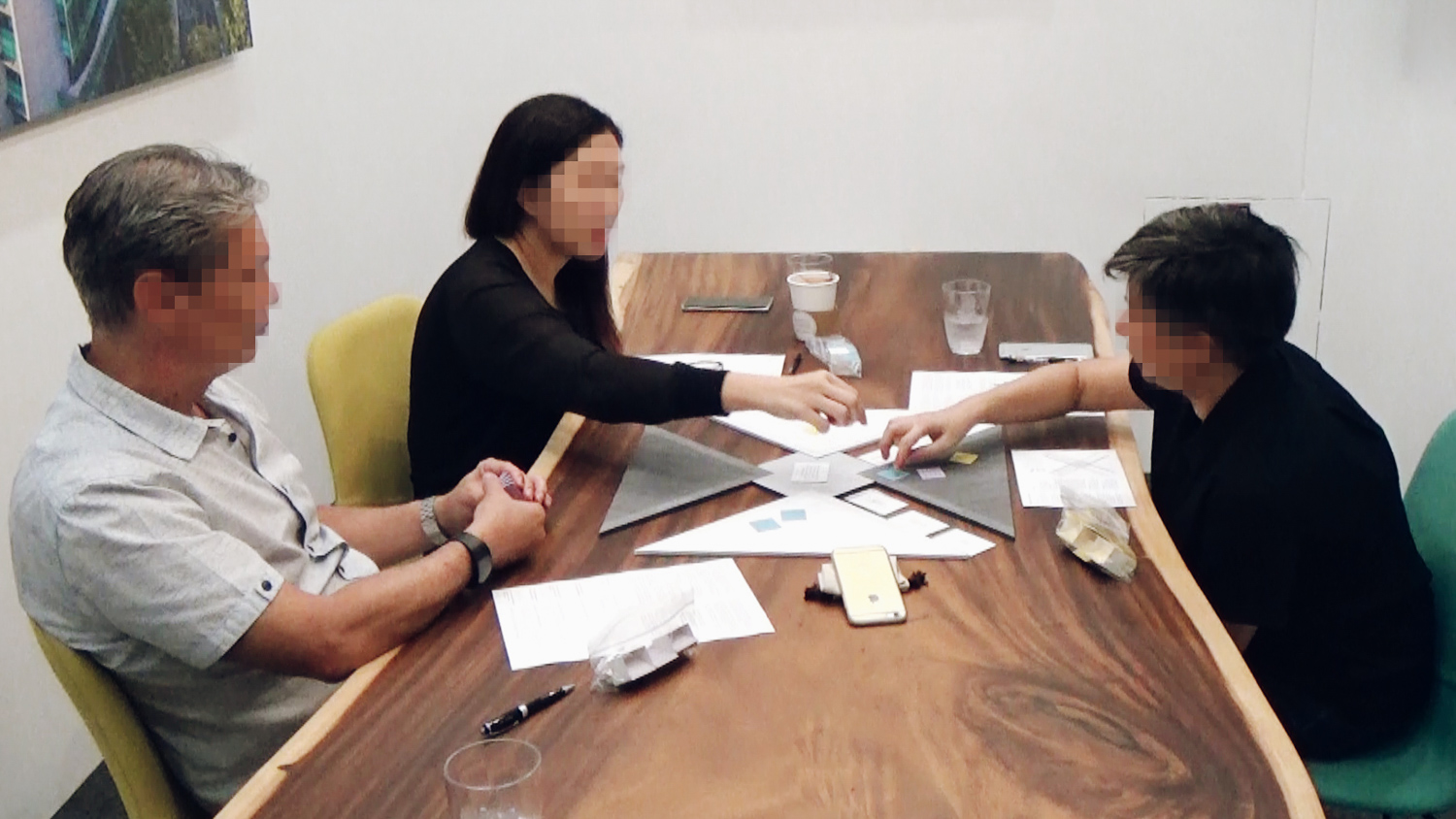Research: Collaboration
Enabling Collaborative Turns for Design Workgroups

The following are extracts from the thesis, “Enabling Collaborative Turns: A Conversation-Based Approach for Design Workgroups”, by Seah Sze Yunn (dated 16 Apr 2020), as part of her fulfilment of the requirements for MA in Design.
Against the backdrop of rising complexity in design problems, driven by rapid technological change, the work of the designer is evolving. Complexities within design problems demand that designers engage in collaboration. By engaging in collaboration beyond their established practices, designers can understand these complex challenges from different disciplinary perspectives, and produce innovative, purposeful and coherent solutions. The ability to collaborate in design develops through the sustained performance of collaborative actions in a workgroup setting.
That said, convening members to ‘work together’ does not necessarily result in collaborative action. When the collaborative intent is not clearly expressed, a workgroup may fall back on familiar cooperative actions, and risk the potential to produce a truly novel solution. Planning is essential for the intentional practice of collaborative actions; to consider when they may take place in a design project and in what form. This study suggests the current gap in understanding what collaboration is and the inconsistent usage of the term may affect how workgroups engage in collaborative work.
Thus, it posits that clarified intent and shared understanding may help design workgroups to collaborate better. In particular, it suggests that conversation can play a critical role towards enabling the practice of collaborative actions. Hence, this study aims to articulate what collaboration in design might entail, and how a workgroup may, through collaborative conversation, achieve a shared and clarified understanding of what collaboration means.
Research Approach & Process
A primary objective of this research is to gain a contextual understanding of how collaboration occurs in design projects between multiple disciplinary professionals, and how conversations are conducted in these projects. Contextual data was gathered through a combination of in-depth interviews and overt observations conducted during a four-week research residency at a multidisciplinary design studio. The intent was to synthesise these contextual understandings with the notions drawn from the concurrent literature review, to identify how localised contextual findings would corroborate and resonate with existing theory or generate new lines of inquiry. By comparing and synthesising contextual findings with that of theory, the research developed a conceptual delineation to describe what collaboration might entail, and to better understand the extent to which collaborative actions are performed when producing designs with others.

The overarching research process involved developing an expanded definition which outlines the features of collaboration and how a conversation-based approach might be exemplified. This expanded definition guided the research’s design brief – for a prototype that would embody the initial synthesised outputs of the research process. The intent for the prototype is to help uncover a possible way for a workgroup to guide itself in a conversation-based intervention towards enabling collaboration in design.
Key Outputs & Findings
The literature review surfaced the importance of locating the extent of collaboration in different forms of ‘joint work’, as a means for workgroups to clarify and calibrate their actions. The review also identified the possible features of collaboration to distinguish it from cooperation, and clarified where collaboration may occur in participatory-based co-creation and disciplinary-based partnerships. In the discussion on Conversation Theory, the research articulated the relationship between collaborative and cooperative conversations, and actualised this through the concept of Collaborative Turns.
Through the contextual investigation, the research uncovered how selected designers perceive and distinguish collaboration and cooperation. The contextual findings helped to reframe the collaboration-or-cooperation binary, suggesting that a cooperative relationship would be essential for different roles to function effectively in a collaboration. Beyond having a cooperative relationship, collaboration requires the intentionality to seek out divergent views. This need for divergence may seem paradoxical, especially if a workgroup also has to sustain its underlying cooperative relationship, where parties are expected to align and converge.
In response to the identified issues which may hamper collaboration in design, the research developed a conceptual framework by synthesising findings from the literature review and contextual investigation. The conceptual framework comprises three parts: an expanded definition which states the features of collaboration; a delineation of the extent of collaborative action in different disciplinary-based partnerships; and an articulation of how Collaborative Turns, as a conversation-based approach, might enable collaboration in design.
Framework Part 1
Expanded Definition of Collaboration in Design
This research defines ‘collaboration in design’ as:
A progression of collaborative actions that designers and other disciplinary practitioners are jointly accountable for. It involves working interdependently to jointly define a novel problem and evaluate solutions through the integration of knowledge, skills and perspectives. It also involves establishing a cooperative relationship among differentiated roles, yet enabling divergent perspectives and seeking opportunities in the divergence to integrate and develop ideas.
As such, collaboration in design may be recognised through its interconnected features: joint accountability, expertise integration, enabled divergence, task interdependency, role differentiation, and a cooperative relationship.
Framework Part 2
Extent of Collaboration
To recognise the extent to which collaboration takes place in disciplinary-based partnerships, the research mapped these features of collaboration in design for each partnership type. This mapped delineation shows that collaboration is least likely to occur in a multidisciplinary partnership. In a crossdisciplinary partnership, collaboration may occur within a specific part of a project, while interdisciplinary and transdisciplinary partnerships are most likely to produce a collaborative project as a whole. While the delineation may suggest a typology of workgroups, it is worth noting that design processes tend not to conform strictly to a single type of partnership due to situational factors, which determine their suitability and relevance.

Framework Part 3
Concept of Collaborative Turns

Collaborative Turns as an approach to have exploratory and divergent conversations forms the dynamic third part of the conceptual framework that activates and uncovers the other two parts of the framework. The concept of Collaborative Turns is based on the premise that both collaborative conversations and cooperative conversations are necessary for collaboration to occur. Conceptually, it begins with the cooperative mode; enabling its parties to converge in a closely aligned understanding of a given topic or issue. By taking a ‘collaborative turn’, the parties initiate the collaborative mode, where variance in understanding and diverging perspectives are encouraged through conversation, and parties are expected to negotiate through their differences. When ready, the parties’ conversation returns to the cooperative mode, to converge on a shared understanding again about an agreed action. It is important to note that ‘agreement’, especially in the context of Collaborative Turns may not necessarily mean concurring with each other. Rather, it may be about arriving at a shared understanding of different or opposing views.
Conceptual Framework for Collaboration in Design
Using the conceptual framework for collaboration in design, a workgroup may uncover the type of partnership and extent of collaboration they might reasonably have, or engage other parties to form other partnerships to attend to their ‘design problem’. Additionally, when a workgroup has already identified their partnership type, it would help them calibrate their actions and keep the features of collaboration always in mind.

Activity Prototype for a Workgroup
As part of its pragmatic inquiry, this research designed a prototype for an intervention that embodies and exemplifies this conceptual framework; presented as a self-guided activity for a workgroup to have exploratory and divergent conversations about their collaboration. (See design details here.) Through the prototype conversation activity and activity kit, the selected focus group reflected on and discussed their perspectives about the features of collaboration. Further, they arrived at a deeper understanding of what was expected of them, and the extent of their prospective collaboration. The post-activity findings reflected an overall positive response to the intervention, and thus the exemplified framework, which suggested its value and potential to enabling collaboration.

Future direction of the study
This study seeks to provide design workgroups with a shared language to frame mindsets and behaviours that are desirable for collaboration in design. At the core, the study is focused on conversations that enable a workgroup to take a ‘collaborative turn’ — i.e., to converge and recognise each other’s strengths and differences; to divergently uncover challenges and imagine novel solutions; and to reconverge to define the action needed. When practised over time, this approach may enable workgroup members to work better with others in complex situations.
Given the set duration of this study, the contextual investigation is limited to interviews with selected designers and accessible field observations. Thus, the contextual findings serve to complement existing literature, and to inform the development of the conceptual framework and design intervention. The findings generated through the design intervention are contextually bound, but they provide useful reference points for further development of the proposed conceptual framework. This may be investigated by using and evaluating other forms of intervention with workgroups for different contexts and purposes, such as business innovation, community development, and artistic practice. It could also explore research collaboration with other professionals in fields such as human resource development or organisational behaviour, to broaden the perspectives on the proposed conceptual framework.
The global pandemic of COVID-19 is the perfect example of a volatile, unpredictable, complex and ambiguous world that demands collaborative actions. It brings to the fore the need for different voices to make sense of this new world together; a world where we have to work together but apart. How do we continue to develop our proficiency to collaborate in such a world? How might workgroups maintain their cooperative relationship when they are physically removed from each other? How might we build trust and hold divergent perspectives from a distance? Such a world creates a space for future studies on how we enable purposeful divergence without expectation of consensus; to seek opportunities in the divergence to integrate ideas and create novel solutions for this new world.
For more details or interest in using the activity kit with your workgroup, please get in touch. Full text of the thesis is available upon request.